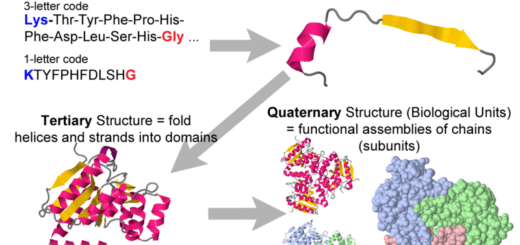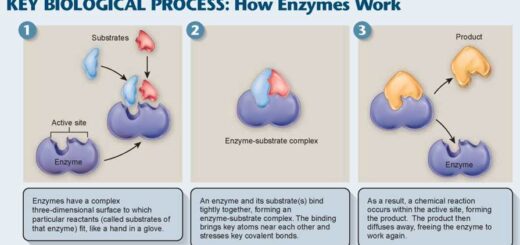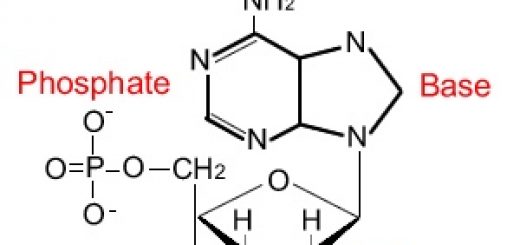Sensitivity in plants (Tropism types, response to touch and darkness)
Sensation (sensitivity) is one of the functions shown by a living organism to maintain its life, where we find that sensitivity in plants is less obvious, sensitivity in animals is more obvious, sensitivity in human reaches its highest efficiency and accuracy, Sensitivity (Irritability) is the suitable responsible of the living organism to the internal and external stimuli to maintain its life.
Sensitivity in plants
Sensitivity in plants includes Tropism, response to touch, and darkness.
Response to touch and darkness in Mimosa plant
The morphology of Mimosa plant leaves: Leaves are compound and pinnate, Each has a primary rachis that carries at its end four secondary rachises, Every secondary rachis carries two rows of leaflets, At the base of every primary and secondary rachises, there is a swollen structure called a pulvinus.
Response of Mimosa leaflets to touch: If you touch a Mimosa leaflet, its petiole soon droops as if it has wilted, other neighbouring leaflets soon will follow till the effect is seen in all the leaflets.
Response of Mimosa leaflets to darkness: In the daytime, the leaflets are held in a horizontal position (undergo a wake movement), At night, the leaflets hang downwards and fold their upper surfaces (undergo a sleep movement).
Explanation of the response of Mimosa to the touch and darkness
The swollen structures ( pulvinus ) act as joints in these movements, as the following:
The cell walls of the lower half of the pulvinus are more sensitive than those of the upper half and they play the main role in this movement.
When the plant is touched or at darkness, the lower surface of the pulvinus shrinks, This leads to water diffusing to the neighbouring tissues, and hence the leaflets droop, but when the stimulus is removed, the cells regain their turgidity and the leaflets open once more.
Tropism
Tropism and subsequent movement represent the most common type of sensation in plants, Tropism is the curvature of the stem or root of the plant when its sides are subjected to factors (stimuli) such as light, humidity, and gravity in unequal form.
Types of Tropism
Types of tropism are determined according to the affecting factor, as the following:
- Phototropism ⇒ light.
- Geotropism ⇒ gravity.
- Hydrotropism ⇒ water.
Phototropism
Phototropism is the response of plant parts to the external stimulus which is the light, causing the curvature of plant parts towards or away from it.
Experiment: to prove the occurrence of phototropism.
Steps :
- Place a straight seedling on a cork disc floating on the surface of a beaker half-filled with water.
- Put the beaker in a light-proof box, At one side.
- leave a small circular hole to admit light.
- Leave it for a few days.
Observation: The stem inclines towards the source of light, and the root grows away from it.
Conclusions: The stem is positive phototropic, and the root is negative phototropic.
Explanation: Curvature is due to the unequal growth of two sides in both the root and stem, where: The side of the stem which is away from the light grows more rapidly, so, the stem curvature is towards the light, The side of the root which is near to the light grows more rapidly, so, the root curvature is away from the light.
Experiments to explain phototropism
Experiment 1: Boysen Jensen experiment
Boysen Jensen explained this phenomenon during his observations and results of experiments on the oat ( Avena ) coleoptile.
Steps :
- Oat coleoptile is subjected to the light from one side.
- Cut off the tip (1-2 mm of the tip), then it is subjected to the light from one side.
- The decapitated tip is returned or fixed again to the coleoptile with gelatine.
- The tip is separated again from the coleoptile with a mica sheet.
Observations:
- The curvature of the coleoptile towards the source of light.
- The plant loses its ability to bend towards the light.
- Its ability to bend towards the light is restored.
- NO curvature.
Conclusions :
- The tip of the coleoptile synthesizes chemical substances called auxins that affect the growth and cause the tropism towards the light.
- The tip is the source of auxins which cause the tropism.
- Auxins diffuse through the gelatine and affect the growth.
- Auxins can’t diffuse through the mica sheet.
Explanation: Curvature towards the light (phototropism) is the result of the unequal concentration of auxins on the two sides of the coleoptile which causes the unequal growth of the two sides.
Auxins are chemical compounds secreted from the coleoptile’s tip of plants and affected by external factors, The main type of auxin is indole-acetic acid (I A A).
Experiment 2: Went experiment
Went made his experiment to prove the results of Boysen Jensen, as the following:
Steps:
- He exposed an oat coleoptile to an unidirectional illumination, then he cut off the tip and placed it on two blocks of agar separated by a metallic sheet, He measured the concentration of auxins in each block.
- He put the blocks of agar on a decapitated coleoptile which is not subjected to the light.
Observations :
- 65 % of auxins are accumulated in the agar block of the side away from the light, and 35 % of auxins are accumulated in the agar block of the side facing the light.
- Curvature of the coleoptile’s tip.
Conclusions :
- Auxins move from the side facing the light to the far (dark) side.
- The curvature of the tip is due to the difference in concentration of auxins in the added blocks.
General explanation of phototropism experiments
Stem is positive phototropic, as the auxins in the stem move away from the side facing the light to the non-illuminated side, this leads to the elongation of cells on that side, thus curvature towards the light occurs.
The root is negative phototropic, as the accumulation of auxins on the dark side produces an opposite effect, Elongation is inhibited in the dark side, while the illuminated side continues to grow, so, the root bends away from the light.
Explanation of the difference in auxins’ effect on both root and stem:
The difference in the behaviour of root and stem can be explained because the concentration of auxins required for the elongation of root cells is less than that required for the elongation of stem cells.
Geotropism
It was believed that the root grows downwards to avoid the light and seek nutrients, but this is incorrect, When you hang a pot with a plant upside down for a certain time, the root grows downwards away from the soil and towards gravity, while the stem grows upwards away from the gravity.
Scientists named this phenomenon geotropism, Geotropism is the response of plant parts to the external stimulus which is gravity, where they move away from or toward it.
Experiment to illustrate the effect of gravity on the root and stem
Steps:
- Several seeds are germinated in a soil moistened with water (in a vertical position).
- One seeding is placed on its side, so, the radicle and plumule are in a horizontal position, then leave it for several days.
Observations:
- PLumules grow vertically upwards, while the radicles grow downwards.
- The tip of the stem curves upwards away from gravity and the root bends downwards.
Conclusions:
Stems are negative geotropic, while roots are positive geotropic.
Explanation: Curvature is due to the variation in growth of the two sides of the organ as a result of the unequal distribution of auxins.
General explanation of geotropism
When the plant grows in its natural vertical position: Auxins will be equally distributed in the tips of both root and stem, As a result, the stem grows vertically upwards, while the root grows downwards.
When the plant grows in a horizontal position: Auxins accumulate in the lower side of both the root and stem.
In stem: auxins activate the cells of the lower side of the stem which elongate more than those of the upper side, and so the tip of the stem curves upwards against gravity (negative geotropic).
In root: accumulation of auxins in the lower side of the root inhibits the activity, and so cells of the upper side elongated more than the lower side and the root bends downwards (positive geotropic)
Hydrotropism
It is the response of plant parts to the external stimulus which is the humidity, where they move away from or towards it.
Experiment: To prove the hydrotropism phenomenon
Germinate some seeds in two glass troughs containing two equal amounts of dry soil, then follow the following steps:
Steps:
- Spray water at regular intervals in the first trough.
- Spray water only at the sides in the second trough, then leave the two troughs for several days.
Observations:
Explanations :
- Roots grow vertically due to the equal distribution of water in the soil around the roots.
- The curvature of roots in the second trough is due to the presence of water at the sides and its absence in the middle of the trough.
The root is positive hydrotropic, as Auxins accumulate in the side facing water and inhibit its elongation, while the cells of the far side continue their normal growth, which leads to the curvature of the root towards water.
The types of tropism and their effects on the root and stem:
In the stem: Phototropism is positive, Geotropism is negative, and Hydrotropism is negative.
In the root: Phototropism is negative, Geotropism is positive, and Hydrotropism is positive.
Asexual & sexual reproduction in plants, Pollination and Stages of fertilization process in plants
Excretion in plants, Importance and types of transpiration for the plant
Nervous system in man, Nerve cells types and Nature of nerve impulse



